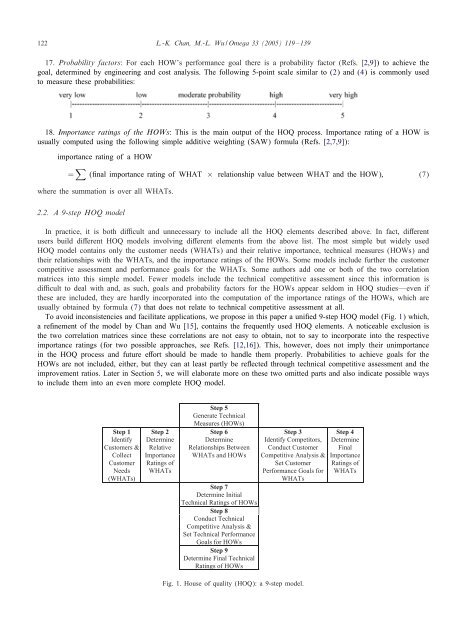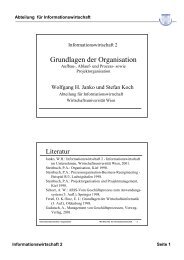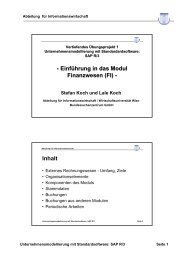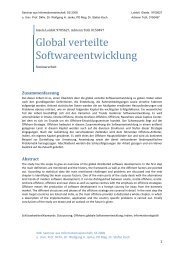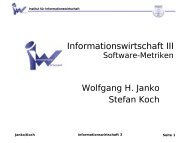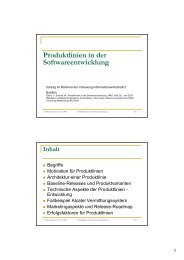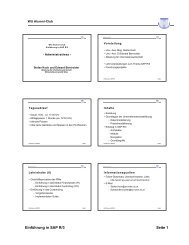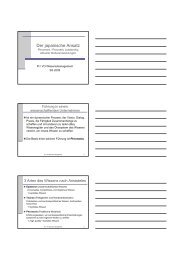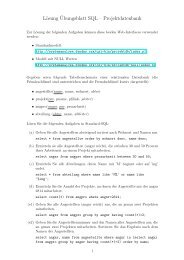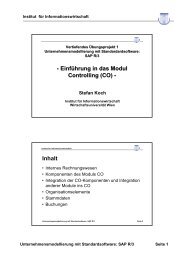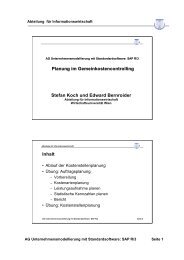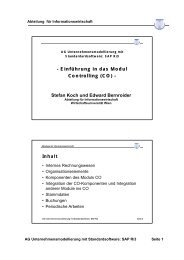A systematic approach to quality function deployment with a full ...
A systematic approach to quality function deployment with a full ...
A systematic approach to quality function deployment with a full ...
You also want an ePaper? Increase the reach of your titles
YUMPU automatically turns print PDFs into web optimized ePapers that Google loves.
122 L.-K. Chan, M.-L. Wu / Omega 33 (2005) 119 – 139<br />
17. Probability fac<strong>to</strong>rs: For each HOW’s performance goal there is a probability fac<strong>to</strong>r (Refs. [2,9]) <strong>to</strong> achieve the<br />
goal, determined by engineering and cost analysis. The following 5-point scale similar <strong>to</strong> (2) and (4) is commonly used<br />
<strong>to</strong> measure these probabilities:<br />
18. Importance ratings of the HOWs: This is the main output of the HOQ process. Importance rating of a HOW is<br />
usually computed using the following simple additive weighting (SAW) formula (Refs. [2,7,9]):<br />
importance rating of a HOW<br />
= � ( nal importance rating of WHAT × relationship value between WHAT and the HOW); (7)<br />
where the summation is over all WHATs.<br />
2.2. A 9-step HOQ model<br />
In practice, it is both di cult and unnecessary <strong>to</strong> include all the HOQ elements described above. In fact, di erent<br />
users build di erent HOQ models involving di erent elements from the above list. The most simple but widely used<br />
HOQ model contains only the cus<strong>to</strong>mer needs (WHATs) and their relative importance, technical measures (HOWs) and<br />
their relationships <strong>with</strong> the WHATs, and the importance ratings of the HOWs. Some models include further the cus<strong>to</strong>mer<br />
competitive assessment and performance goals for the WHATs. Some authors add one or both of the two correlation<br />
matrices in<strong>to</strong> this simple model. Fewer models include the technical competitive assessment since this information is<br />
di cult <strong>to</strong> deal <strong>with</strong> and, as such, goals and probability fac<strong>to</strong>rs for the HOWs appear seldom in HOQ studies—even if<br />
these are included, they are hardly incorporated in<strong>to</strong> the computation of the importance ratings of the HOWs, which are<br />
usually obtained by formula (7) that does not relate <strong>to</strong> technical competitive assessment at all.<br />
To avoid inconsistencies and facilitate applications, we propose in this paper a uni ed 9-step HOQ model (Fig. 1) which,<br />
a re nement of the model by Chan and Wu[15], contains the frequently used HOQ elements. A noticeable exclusion is<br />
the two correlation matrices since these correlations are not easy <strong>to</strong> obtain, not <strong>to</strong> say <strong>to</strong> incorporate in<strong>to</strong> the respective<br />
importance ratings (for two possible <strong>approach</strong>es, see Refs. [12,16]). This, however, does not imply their unimportance<br />
in the HOQ process and future e ort should be made <strong>to</strong> handle them properly. Probabilities <strong>to</strong> achieve goals for the<br />
HOWs are not included, either, but they can at least partly be re ected through technical competitive assessment and the<br />
improvement ratios. Later in Section 5, we will elaborate more on these two omitted parts and also indicate possible ways<br />
<strong>to</strong> include them in<strong>to</strong> an even more complete HOQ model.<br />
Step 1<br />
Identify<br />
Cus<strong>to</strong>mers &<br />
Collect<br />
Cus<strong>to</strong>mer<br />
Needs<br />
(WHATs)<br />
Step 2<br />
Determine<br />
Relative<br />
Importance<br />
Ratings of<br />
WHATs<br />
Step 5<br />
Generate Technical<br />
Measures (HOWs)<br />
Step 6<br />
Determine<br />
Relationships Between<br />
WHATs and HOWs<br />
Step 7<br />
Determine Initial<br />
Technical Ratings of HOWs<br />
Step 8<br />
Conduct Technical<br />
Competitive Analysis &<br />
Set Technical Performance<br />
Goals for HOWs<br />
Step 9<br />
Determine Final Technical<br />
Ratings of HOWs<br />
Step 3<br />
Identify Competi<strong>to</strong>rs,<br />
Conduct Cus<strong>to</strong>mer<br />
Competitive Analysis &<br />
Set Cus<strong>to</strong>mer<br />
Performance Goals for<br />
WHATs<br />
Fig. 1. House of <strong>quality</strong> (HOQ): a 9-step model.<br />
Step 4<br />
Determine<br />
Final<br />
Importance<br />
Ratings of<br />
WHATs


